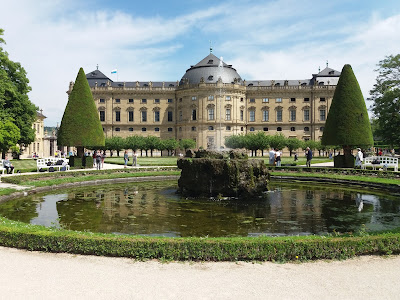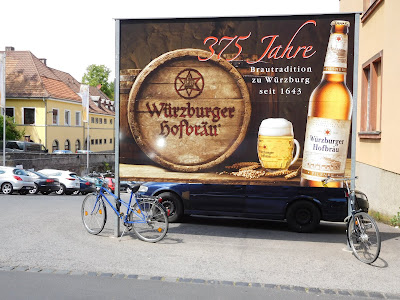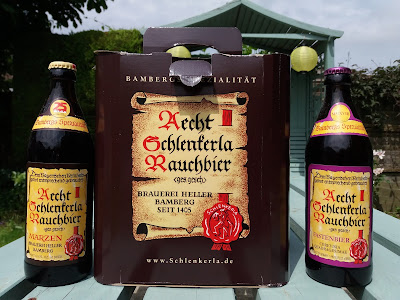It's that time of year again with the SIBA South East
Regional Beer Festival taking place and hosted for the 12th year by Tonbridge Juddians Rugby Club. As part of the deal between TJ's and SIBA, the rugby club provide the
premises for the the SIBA South East
Region Competition, and once this brewery plus guests, trade event is over,
the beers are handed over to the Juddian's so that the festival proper can
begin.
The breweries, who are all SIBA members, supply the beer
foc, which results in a healthy profit for the club, particularly as the people
staffing the festival are all volunteers. The good people of Tonbridge are therefore
able to experience and enjoy a festival which is several orders of magnitude
above what would otherwise be possible, but before the festival throws its
doors open to the public, the beers are judged. This after all is a contest for
places in the
SIBA South East Region Competition.
I didn't make a note of the number of brewers exhibiting
this year, but I do know that around 180 different cask
ales are judged across nine separate categories. The SIBA South East Region covers
a wide area which encompasses the counties of Berkshire,
East and West Sussex, Hampshire, Isle
of Wight, Kent,
and Surrey, plus London.
The tasting and judging of the beers takes place earlier on Friday,
and I know several people who volunteer as judges each year. I have been asked
to judge in previous years, but as it entails taking a day off from work I
normally decline. I have taken part in beer judging before, but normally I
prefer to drink and enjoy my beer, rather than attempting to pigeon-hole and
assess it against others.
The festival takes place on part of the playing area in
front of the clubhouse, with the beers and the beers housed in a large marquee.
This leaves plenty of room for people to sit out and soak up the sun, whilst
enjoying the beer. In previous years we have made it a family day out, going along, armed with folding
chairs plus plenty of food. We have then met up with other family members and friends, but this time a certain football
match got in the way.
I called in on Friday evening, arriving shortly before 9pm. The crowds in the tent had thinned out,
but there were still plenty of people sitting outside on the grass, enjoying
the warmth of what had been probably the warmest day so far of this incredibly
long hot spell. leaving plenty of space inside the marquee and ample room to
move about and peruse the rows of different casks.
I met up with a few fellow CAMRA members and friends, and
ended up staying until closing time. I did the same yesterday (Saturday) evening, arriving
at a similar time, after the football had finished and I'd been suitably fed. It
was this social side of the festival that I particularly enjoyed, as opposed to
just sampling some interesting beers, although I must say there were some
interesting ones.
As in previous years, all beers were priced at one token per
half pint, regardless of strength, which certainly made life easier for the
mathematically challenged amongst us. Tokens were priced at £1.80 each. I seriously wish our own beer festival, a joint venture between West Kent CAMRA and
the Spa Valley Railway, would adopt this eminently sensible practice, as it
would make life so much easier for both staff and customers alike.
I didn’t go overboard on the sampling, but I enjoyed most of
the beers I sampled and the ones which really stood out were: Twin Spring
4.0% from New River Brewery; Backstage IPA 5.6% from Signature Brewery and XPA
4.0 from Five Points Brewing. The above were all pale, well-hopped premium bitters with
that refreshing, citrus-like bite. With temperatures in the high twenties,
these types of beer early hit the spot in terms of their refreshment and their
thirst-quenching properties.
Later, on both Friday and Saturday evenings, I got stuck
into a few porters, with Bedlam Porter 5.0% from Bedlam Brewery, 1770 London Porter
4.7% from Brumaison and Smokestack Porter 6.0% from Tap East coming out particularly good.
On Saturday there was live band playing in an adjacent
marquee, which got the crowd on their feet, but it was noticeable that the
numbers in attendance were very much down on previous years - thanks to that
football match.
Despite this rather unforeseen setback, the annual TJ's Beer Festival has really come into its own, and has been taken to heart by the good
townsfolk of Tonbridge. It remains firmly fixed in the local social
calendar, and is talked about long after each event – surely the ultimate
accolade!
As ever thanks go to Tonbridge Juddians, and all
their hard-working volunteers, for once again, putting on such an excellent and
highly enjoyable festival, and to the brewers from SIBA South-East , who
provided such a fine range of beers.


















































